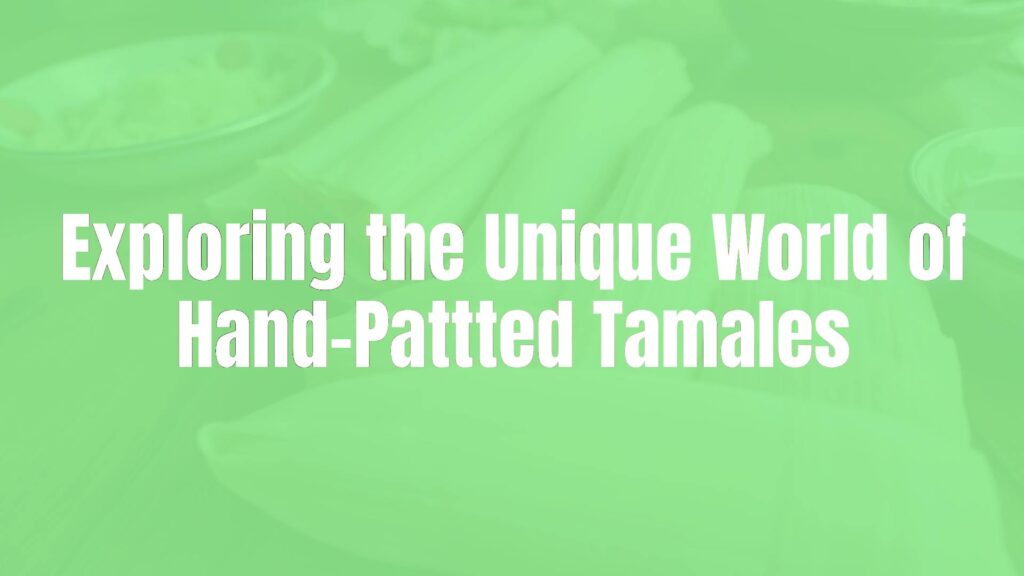Understanding the Hand-Pattted Tamal
The hand-patted tamal stands out as an artisanal expression of one of the most beloved dishes in Latin American cuisine. Unlike machine-pressed or uniformly rolled varieties, this tamal is crafted by hand, giving it a distinctive shape, texture, and character. Highly prized in regional cooking, the hand-patted tamal offers a glimpse into traditional methods that emphasize individuality and a home-cooked touch.
What Makes Hand-Patted Tamales Distinctive?
Hand-patted tamales are recognized by their irregular, oval, or circular shape—an unmistakable result of being shaped by palm and finger, rather than molds or presses. The masa, or corn dough, takes on a slightly flattened and artisanal form, often thicker and more rustic than standardized tamales. This personal touch results in variance in size and texture from tamal to tamal, showcasing the cook’s skills and preferences.
Historical and Regional Background
Hand-patting tamales is a deeply rooted practice in various Mexican and Central American regions, especially rural communities where family gatherings or festivals call for large-scale tamal production. Passed down through generations, this technique often features in tamaladas, traditional tamal-making parties that bring families and friends together. Each region may infuse the method with unique local ingredients or presentation styles, but the hand-formed nature remains constant—a testament to tradition and artisanal pride.
Essential Components and Typical Ingredients
The heart of a hand-patted tamal is its masa, made from nixtamalized corn, which is kneaded until pliable and flavorful. Spreads of the masa are hand-flattened, then layered around a filling before being wrapped in corn husks or sometimes banana leaves. Common fillings include stewed chicken, shredded pork, cheese, chiles, beans, or a combination thereof. The proportion of masa to filling is a signature characteristic, often resulting in more substantial, rustic tamales compared to thinner, machine-made counterparts.
Preparation Approaches and Varieties
While the general process remains similar—spreading, filling, wrapping, and steaming—hand-patted tamales adapt to myriad variations. Regional differences might include the use of fresh herbs in the masa, diverse meat or vegetarian fillings, and even sweet versions with fruits or nuts. Some cooks may substitute lard with vegetable shortening for a lighter version or use different types of corn masa to cater to local palates and dietary needs.
Common Variations and Substitutions
Hand-patted tamales are incredibly versatile. In some regions, fillings such as mole, roasted vegetables, or seafood are popular, while others add raisins or chocolate for sweet tamales. Banana leaves may replace corn husks in the southern states of Mexico or parts of Central America, lending a different aroma and flavor to the finished product. Contemporary adaptations may also incorporate vegan options, with creative uses of mushrooms, seeds, or plant-based proteins.
Serving Ideas and Pairings
Hand-patted tamales are often enjoyed fresh from the steamer, accompanied by traditional salsas—whether smoky, tangy, or spicy. Sides might include Mexican crema, crumbly cheese, or pickled vegetables for balance. Beverages such as atole, champurrado, or a robust Mexican hot chocolate provide classic pairings, while light beers or agua fresca offer refreshing alternatives. Whether served at festive gatherings or as a comforting homemade meal, the hand-patted tamal evokes warmth, history, and the enduring appeal of hands-on culinary tradition.

